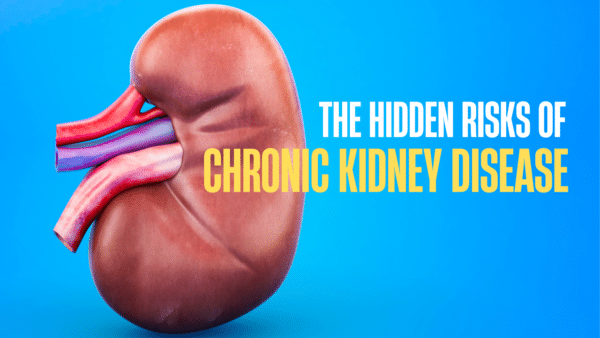These organic compounds are soluble solely in nonpolar solvents and insoluble in water. These can be produced in the human body and are found in oil, butter, whole milk, cheese, fried foods, and some red meats.
Lipids are essential components of the structure and functioning of living cells. Lipids, such as fats and oils, are crucial to your health since they are involved in many functions, such as cell signaling, hormone synthesis, nerve protection, and energy production. They can, however, lead to illnesses if consumed in excess.
Cholesterol and triglycerides are two lipids in our bodies that are usually related to health issues. Too much fat and cholesterol in your diet can affect your blood vessels.
Having high levels of them can increase your risk of medical disorders such as liver disease and heart disease. According to CDC, cardiovascular disease is the top cause of death in the United States. According to the World Health Organization (WHO), 17.9 million people die each year from cardiovascular disease worldwide.
What Do They Do?
Lipids perform a variety of functions in the body, including:
1. Store Energy:
When we consume more energy than we require, our bodies store it as adipose tissue (fatty tissue, which we call fat). Carbohydrates and fats supply the majority of the energy needed by the human body. Your body stores glucose as glycogen. While glycogen is a quick energy source, it is very dense and contains a lot of water, so the body cannot store much of it for long.
Fat can act as a longer-lasting energy reserve. Without water, fats pack together closely and store significantly more energy in a smaller space. According to the National Library Of Medicine, a fat gram is densely loaded with energy, having more than twice as much as a carbohydrate gram.
2. Nervous System:
Lipids are an essential component of your nervous system. Lipids can be found in the fatty tissue covers that shield your nerve cells and improve the conduction of their impulses (myelin sheaths)
3. Hormone Production:
Certain hormones, such as estrogen, testosterone, and cortisol, need lipids to be synthesized. Hormones perform the following vital functions:
• Play important role in sexual development and reproduction
• Aid in the regulation of the immune system and metabolism
• Maintain a healthy equilibrium of water and salt (sodium) in the body
• Reduce inflammation while promoting healing
• Control the body’s response to stress
• Control circadian rhythms.
4. Insulate And Protect:
Fat padding on our bodies protects us from daily friction. A man’s average body fat percentage is 18 to 24 percent, whereas a woman’s average body fat percentage is 25 to 31 percent. Nonetheless, depending on the degree of obesity, adipose tissue can account for a significantly higher percentage of body weight.
Some of this fat is deposited in the abdominal cavity as visceral fat, while others are stored just beneath the skin as subcutaneous fat. Visceral fat protects vital organs. The blanket layer of subcutaneous fat protects the body from excessive temperatures and helps to regulate the internal environment. It protects and cushions our hands and buttocks, which are regularly in contact with rough surfaces.
5. Aid Digestion:
The dietary fats in our diets break down in our digestive tracts, allowing necessary micronutrients to be transported. Fat-soluble nutrients are essential for health and serve many functions. The fat-soluble vitamins A, D, E, and K are present in fat-containing products. Some fat-soluble vitamins (for example, vitamin A) can also be present in naturally fat-free foods such as green leafy vegetables, carrots, and broccoli. These vitamins are most easily absorbed when combined with fat-containing foods.
Types Of Lipids:
The three main types of lipids are:
1. Triglycerides:
They account for more than 95 percent of dietary lipids and can be found in fried products, butter, milk, cheese, and some meats. Triacylglycerols occur naturally in several foods, including avocados, olives, corn, and almonds.
Triglycerides in food are usually referred to as “fats” and “oils.” Fats are solid lipids at room temperature, whereas oils are liquid.
2. Phospholipids:
They account for just around 2% of dietary lipids. They are soluble in water and can be found in plants and animals. Phospholipids are essential for forming the protective barrier or membrane surrounding your body’s cells. In the body, phospholipids are produced to build cell and organelle membranes. Phospholipids form blood and body fluids structures that allow fat to be contained and transported throughout the bloodstream.
3. Sterols:
Sterols are the least common type of lipids. Cholesterol is probably the best-known sterol. Despite its bad reputation, the body obtains just a small portion of its cholesterol from food, and the body produces the majority. Cholesterol is an essential component of the cell membrane required for synthesizing sex hormones, vitamin D, and bile salts.
LIPID PANEL BLOOD TEST:
The Lipid Panel Blood Test can assess hyperlipidemia as a potential cause of coronary heart disease.
Includes: A lipid panel evaluates five types of lipids in a blood sample, including:
• Total Cholesterol:
It is your total cholesterol level, which includes LDL-C, VLDL-C, and HDL-C.
• Low-density lipoprotein (LDL) cholesterol:
Also known as “bad cholesterol,” this kind of cholesterol is found in the blood. It can build up in your blood vessels and raise your chances of developing cardiovascular disease.
• Very low-density lipoprotein (VLDL) cholesterol:
This kind of cholesterol is often present in very low concentrations in fasting blood samples because it is primarily derived from the food you’ve recently eaten. A rise in this kind of cholesterol in a fasting sample could indicate a problem with lipid metabolism.
• High-density lipoprotein (HDL) cholesterol:
Also known as “good cholesterol,” this kind of cholesterol is found in the body. It aids in the reduction of LDL accumulation in your blood vessels.
• Triglycerides:
These are a type of lipid found in foods. Excess triglycerides in the blood can cause cardiovascular disease and pancreatic inflammation.
Test Results: 1-2 days. Whether or holidays may cause delays.
Why Do I Need This Test?
If you have a family history of heart disease or stroke, you may undergo this panel of testing.
Your doctor may also recommend this test if he suspects you are at risk for heart disease. The following are risk factors:
• Your blood pressure stays high.
• Diabetes and pre-diabetes
• Obesity or being overweight
• Smoking
• Lack of physical activity
• Unhealthy diet
• Stress
• A high total cholesterol level
References:
1. Harvard. Fats And Cholesterol. Retrieved from www.hsph.harvard.edu: https://www.hsph.harvard.edu/nutritionsource/what-should-you-eat/fats-and-cholesterol/
2. Hopkins. Lipid Panel. Retrieved from www.hopkinsmedicine.org: https://www.hopkinsmedicine.org/health/treatment-tests-and-therapies/lipid-panel
3. MSU. Lipids. Retrieved from www2.chemistry.msu.edu: https://www2.chemistry.msu.edu/faculty/reusch/virttxtjml/lipids.htm
4. Thomas. Lipids. Retrieved from www.britannica.com: https://www.britannica.com/science/lipid/Substituent-groups
5. WalkInLab. Lipid Panel Blood Test. Retrieved from www.walkinlab.com: https://www.walkinlab.com/products/view/lipid-panel-blood-test
6. Yang. Lipid Function. Retrieved from www.sciencedirect.co: https://www.sciencedirect.com/topics/biochemistry-genetics-and-molecular-biology/lipid-function

